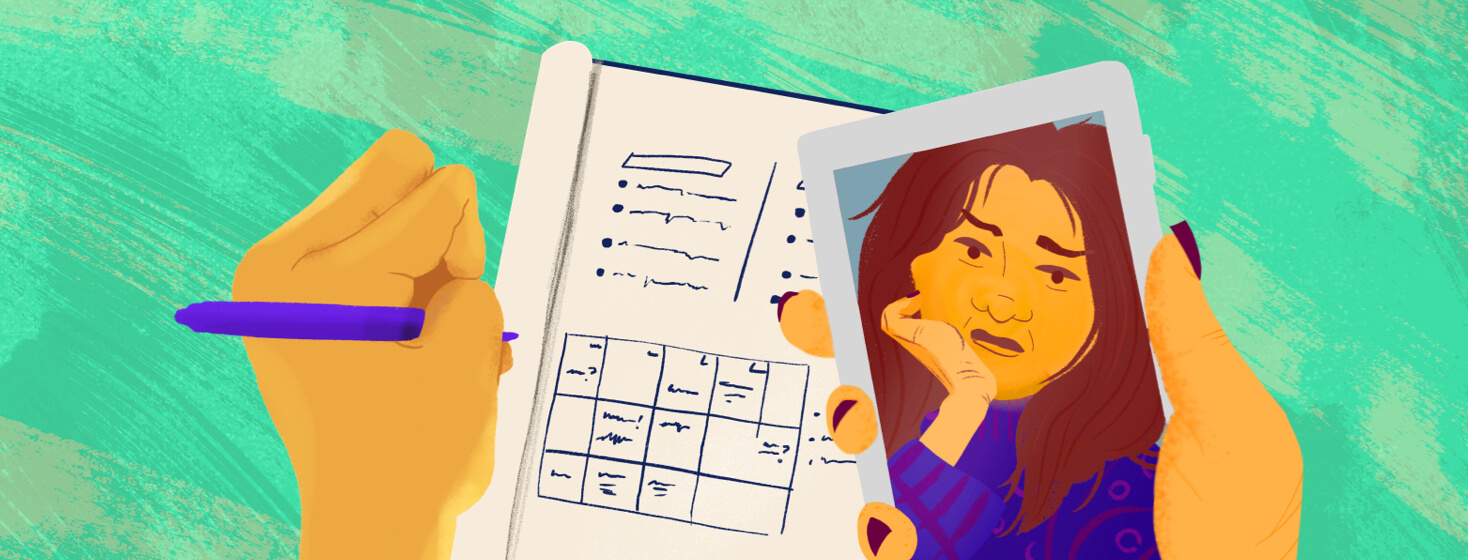Tracking Your TED Symptoms
People with thyroid eye disease (TED) may experience a variety of symptoms. These may include inflammation, dry and irritated eyes, difficulty closing the eyelids, or double vision, just to name a few. These symptoms can be anywhere from mild to severe, and they affect everyone differently.1,2
Although thyroid eye disease (TED) symptoms may be different for each person, tracking your unique symptoms early and often can result in better treatment outcomes down the road.1
TED should be treated as soon as possible during its active phase when symptoms are visible. An active phase of the disease typically lasts 1 to 2 years, so it is crucial to begin treatment as early as you can. Tracking TED symptoms is a key part of this strategy.1
Why tracking TED symptoms is important
Tracking TED symptoms is important because, if left untreated, the condition can lead to things like damage to the cornea and – in rare cases – vision loss. The earlier your symptoms are confirmed, the better your TED can be managed with the proper treatment options.2
Even if your symptoms are relatively mild and do not impact your quality of life yet, it is still very important to track TED symptoms and get them treated as soon as possible. Logging symptoms can also help pinpoint potential flare-ups or a recurrence of the disease down the road.1
Which TED symptoms are important to track
You should log any eye symptoms that seem unusual, different, or painful. This can include things like:1,2
- Eye pain, both when moving and not moving the eye
- Dry and irritated eyes
- Blurred and double vision
- Redness and swelling of the eyelids
- Redness and swelling of the eyeballs
- Bulging of the eyeballs (proptosis)
- Difficulty closing the eyes when going to sleep
How to track
It is important for both you and your doctor to regularly observe and track your symptoms. Here are several ways you can track your TED symptoms on your own:3
- Take photos. Look directly in the camera so you can get a clear shot of your eyes. These "selfies" will come in handy when you and your doctor are evaluating the progression of symptoms over time.
- Keep a journal. Write down any new or evolving symptoms as they happen. Describe them in as much detail as you can – when they begin, what they feel like, what they look like, etc. This journal can be used as a reference point for when you have visits to your eye doctor.
- Do a weekly check-in. Each week, take note of any new symptoms. Take a photo or jot down some notes in your journal. Set a reminder on your calendar to check-in at the same time each week so you do not forget.
- Schedule regular visits to your eye doctor. Your doctor will need to evaluate your symptoms at different intervals to determine if your treatment methods are working.
Tracking TED symptoms involves a 2-pronged approach: Symptoms you can log on their own, as well as symptoms that are tracked by your eye doctor. Both are equally important in the diagnosis and treatment of TED.
Chat with your doctor about keeping track of your TED symptoms. It could help you better manage the disease long-term.

Join the conversation